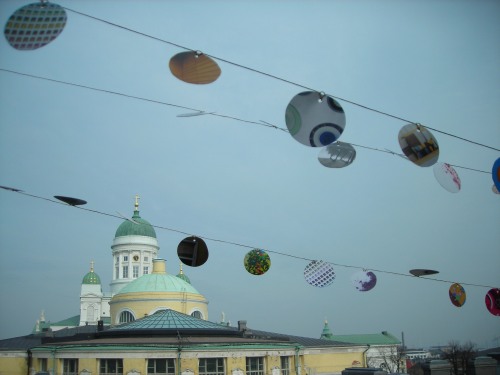
A few weeks ago I spent a couple of hours at the Museum of the City of New York seeing the temporary exhibition The Greatest Grid: The Master Plan of Manhattan, 1811-2011, which runs through April 15. I’m really glad I got down to New York for this show, because it reinforces a lot of the concepts I’ve been exploring on this blog, and in my research on city museums in general.
I got there around 1:00 pm, and the museum was a lot busier than it had been the last time I visited in July 2011, when the main temporary exhibition was about colonial revival architecture. I had to wait in a line 20 people deep at the admission desk, and it was a good thing I arrived when I did. By the time I left at 3:00 not only had the admission line gotten longer but there was also a separate line for The Greatest Grid; the exhibition was so popular that the gallery housing it reached fire code capacity. I talked to a security guard who said it had been that crowded every weekend since the exhibition opened. At one point the exhibition curator, Hilary Ballon, showed up to do a gallery talk and had to use a microphone to be heard amidst a sea of attentive visitors.
Blockbuster exhibitions happen all the time at art museums, and at a lot of science museums too, but they are rare at city history museums. Why is The Greatest Grid so popular? From what I observed during my visit, I would say that MCNY struck a chord with New Yorkers. The museum could’ve presented a fairly standard urban planning exhibition, filled with historic maps, and gotten a reasonable turnout. But instead a decision was made to structure the exhibition around the concept of the Manhattan street grid—why and how it was developed, and what effect it has had on the city over time. That’s a concept that New Yorkers can really sink their teeth into.
Anyone who lives or works in Manhattan contends with the grid on a daily basis (click here to see an excerpt from 12×155, a video installation by artist Neil Goldberg, included in the exhibition, that illustrates this point quite effectively). Not only (says the gal from Boston) is it a particularly easy system to navigate—because of the grid you always know which way is north, and how long it will take to get from one place to another—but it also has a lot to do with what makes New York, New York. For example, the 19th-century real estate boom set in motion by the introduction of the grid is one of the big reasons NYC became such a financial powerhouse. And because the grid doesn’t really allow for inner courtyards, it constantly pushes Manhattanites out on the streets, ratcheting up the energy to that frenetic level we all associate with NYC.
Consequently, what I observed at the exhibition was a gallery packed full of locals in small social groups, spending a very long time pointing and talking about this grid and what it means to them. Often they were trying to find themselves—their home—on the historic maps, but just as often they were pointing out all the interesting things they noticed about how other parts of the city had changed. Here’s my slide show of all the pointers:
This slideshow requires JavaScript.
Anyone who follows Nina Simon’s Museum 2.0 blog knows that museums have a new imperative to craft social experiences that compel visitors to engage with one another while learning. The Greatest Grid is very effective on this level.
Another thing the exhibition team did really well was to develop a small companion exhibition, The Unfinished Grid: Design Speculations for Manhattan, installed upstairs from the main gallery. It features the eight winners of a call for ideas sponsored by MCNY and the Architectural League of New York that asked architects and urban planners to envision ways of improving the grid for the 21st-century. These proposals are quite creative, and pull in visitors even further by asking them to consider whether the grid actually works in its current form. They also reinforce a theme introduced by the main exhibition, that the grid was not inevitable but exists because of—and will continue to be shaped by—a series of urban planning decisions. I’ve written before about the need for city museums to address not just the past but also the present and future of their cities. Therefore I was glad to see The Unfinished Grid help visitors extend the historical timeline to include both contemporary urban life as well as hopes and dreams for a New York still to come.
But the exhibition team missed an opportunity to address another new imperative that Nina Simon regularly writes about: creating experiences where visitors actively participate in making meaning, alongside the curators. If I were a New Yorker visiting this exhibition, filled with excitement and new knowledge about something that feels very personal and real in my daily life, I would want to express it beyond my own social group. I would want to stick comments on a giant map of Manhattan, or photograph myself sharing the most interesting thing I learned, or vote on my favorite avenue. And doing so would help me see beyond my own experience, to the collective life on the street that all New Yorkers share.
New Yorkers, get thee to MCNY to see this exhibition, and then tell me what you think. Do you find it compelling? Did it make you want to share your own experience of the grid? What did you point at?
Read Full Post »









